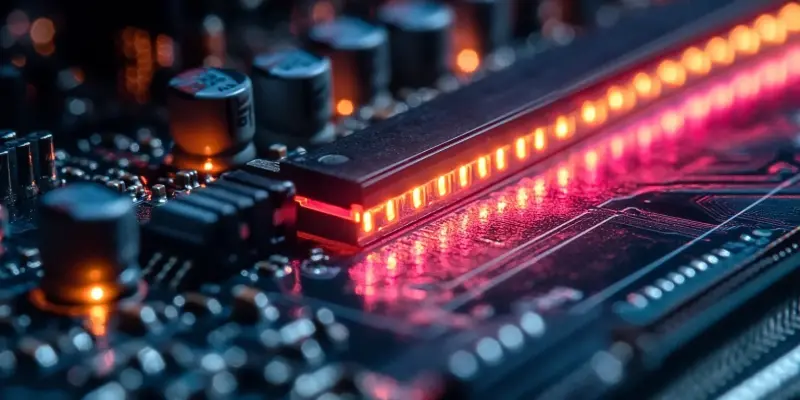In a groundbreaking move, SanDisk has unveiled its revolutionary memory architecture named High Bandwidth Flash (HBF), marking a significant milestone since its separation from Western Digital. This innovative architecture combines the vast storage capacity of 3D NAND flash memory with the high bandwidth attributes typically linked to High Bandwidth Memory (HBM). The sophisticated hybrid memory structure utilizes the vertical stacking of 16 layers of 3D NAND dies, integrated with through-silicon vias (TSVs), to create intricate data pipelines that enable rapid data transfer.
Enhanced Storage and Bandwidth Capabilities
The HBF architecture deviates from traditional NAND designs by dividing each die into numerous sub-arrays that can be accessed randomly and in parallel. This design choice significantly boosts bandwidth while maintaining the cost-effective and high-capacity advantages of NAND. Furthermore, HBF provides 8 to 16 times more capacity per stack compared to current HBM solutions, making it particularly suitable for substantial AI workloads. For example, systems outfitted with eight HBF stacks could offer up to 4 terabytes of storage, enabling the direct storage of massive AI models such as GPT-4 on GPU hardware.
Despite its promising prospects, the HBF architecture does face some challenges. One of the primary issues is the inherently higher latency of NAND compared to DRAM, which can affect performance. Additionally, potential problems with write endurance and block-based addressing may arise. As a result, SanDisk is targeting HBF primarily for read-intensive AI inference tasks that require high bandwidth and capacity but can tolerate higher latency levels. Nonetheless, the architecture’s unique attributes make it a compelling choice for advancing AI model storage capabilities.
Open Standard and Future Applications
SanDisk’s HBF architecture epitomizes a remarkable blend of high capacity and high-speed attributes, which are critical for meeting the increasing demands for data processing and storage in today’s tech-driven world. This innovation is likely to significantly impact various sectors, from computing to data centers, making information access and management more efficient. By integrating the benefits of both 3D NAND and HBM, SanDisk has set a new benchmark in the memory industry, promising enhanced performance and greater efficiency.

